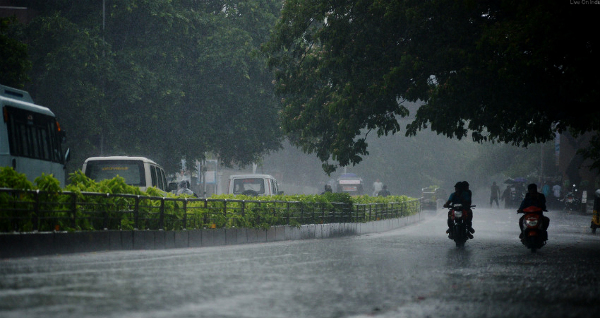After a year’s delay, work on the digital mapping of five river basins in Chennai and its suburbs is set to begin for developing a real-time flood forecasting system for the city.
After assessing strategic installations in the city for the last one year, the Ministry of Defence has rejected the proposal for LiDAR mapping by the State government in 40% of the area, owing to the existence of sensitive installations. However, the State government has been permitted to get assistance from the Survey of India for the mapping of over 5,000 sq. km of the city and its suburbs.
After the floods in 2015, the proposal to get support from the Survey of India was considered a major breakthrough in planning, setting up and operationalising a flood forecasting system for Adyar, Cooum, Kosasthalaiyar, Araniar and Kovalam basins, and setting up of a control room at the State emergency operation centre and flood control rooms at the Greater Chennai Corporation, Kancheepuram and Tiruvallur collectorates.
“We have been trying to get permission from the Minstry of Defence for one year. Finally, there is clarity now. Airborne LiDAR mapping is not permitted for Chennai city. Survey of India has to support us. The digital mapping by the Survey of India is likely to be completed before the 2020 northeast monsoon,” said an official.
No aerial photography
Owing to the existence of strategic installations in the city, aerial photography and mapping cannot be undertaken for 1,903 sq. km of the 5,000 sq. km expanse of the city’s river basins.
“The entire city area and its suburban area is a restricted zone. Important lakes in Kaveripakkam and Poondi reservoir are also located in the restricted area. Airborne survey will not be permitted within a 5-km radius from the runway of Tambaram airfield,” said an official.
In addition to the development of a flood forecasting system, the data on digtal mapping from the Survey of India is also crucial for a flood mitigation plan and for taking preventive measures. For example, the data will be used to make a decision on acquiring land for developing a “flood-holding lagoon” between Mamallapuram and Palar river.
The government will also use the data to make a decision on creating new canals to divert water from Cooum and Kosasthalaiyar rivers to Palar river in the southern parts of the city.
Multiple uses
The Survey of India is likely to get digital maps of 5 cm resolution. The hydromodel using the data will be useful in making a decision on redirection of floodwaters to storage locations during flood events. The data will be used to remove encroachments from tanks, rivers and canals, besides helping augment storage capacity of tanks.
“The project, funded by the World Bank, will empower flood managers with skill sets. Bathymetry for lakes in 95 localities have been completed,” said an official.
Source: TH
Image Courtesy:Skymet
You may also like
-
Trade Connect E-platform For Exports Is Single Window, Fast, Accessible And Transformational: Shri Piyush Goyal
-
Dot Simplifies Approval Processes For Telecom Licenses And Wireless Equipment
-
Coal Production and Supply Trends on Positive Trajectory
-
Union Minister To Release Booklets On Promotion Of Indigenous Species & Conservation Of States Fishes
-
2nd India-Japan Finance Dialogue held in Tokyo on 6th September, 2024
